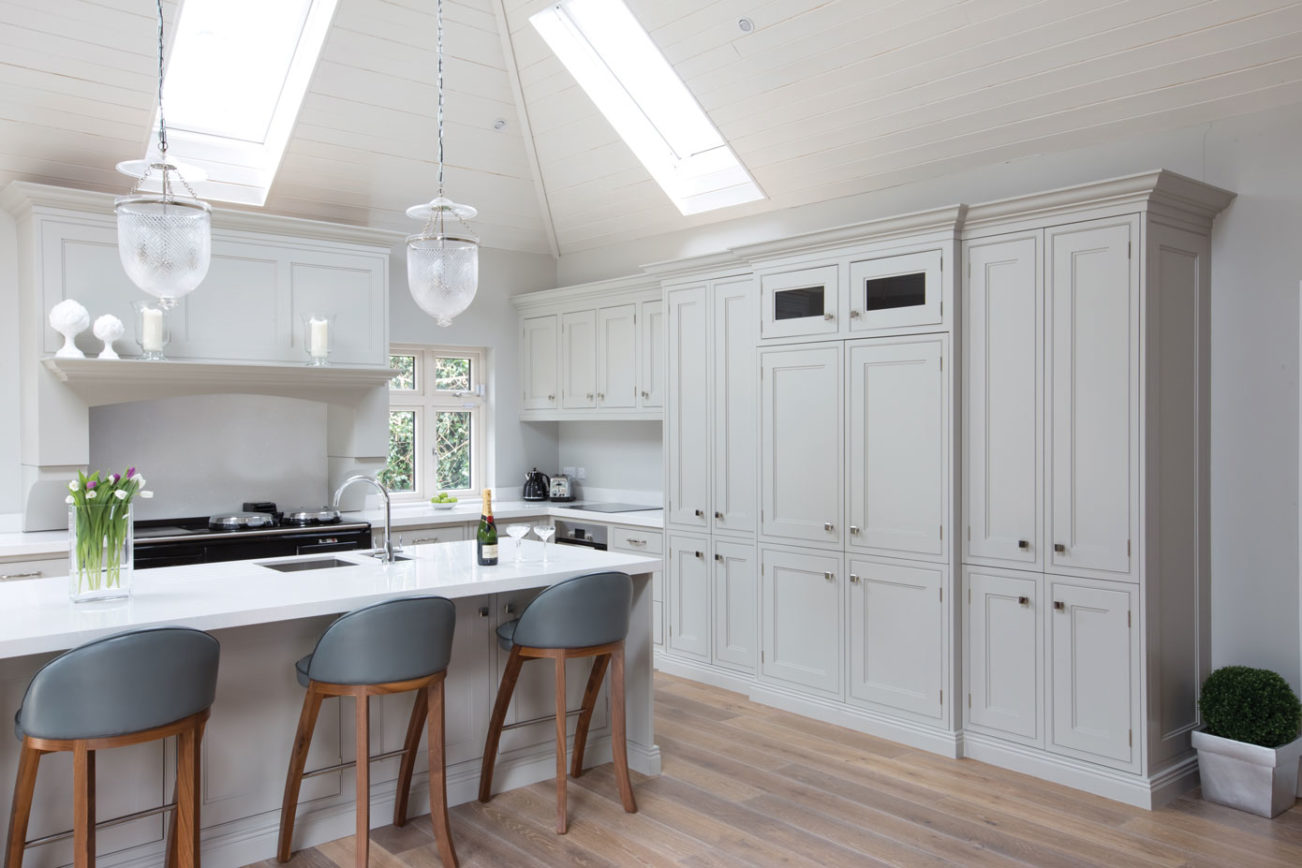There is no one-size-fits-all approach to designing a room in which to cook and gather. It’s all about individual needs …
The kitchen is arguably the most difficult room in the house to design, not least because it serves so many functions. As well as an efficient place to cook, the heart of the home needs to be an inviting space in which to convene, eat and entertain. Whether you’re designing from scratch or planning a refurbishment, the task to create the perfect space can feel daunting. But following a draconian set of rules is not the answer. Rather, take your own needs (and those of your family) into consideration and you can create a room that is as beautiful as it is practical. Here are eight kitchen rules…and how to break them.

1. RULE: TRADITIONAL STORAGE WORKS BEST
IN REALITY: MODERN SOLUTIONS CAN BE PRACTICAL AND STYLISH
Good modern kitchen designers offer so much more than just generic drawers and cabinets. One of the advantages of creating a bespoke kitchen is the opportunity to squeeze out every inch of available space in smart, stylish and unique ways. From clever window seating to built-in cookbook shelves to customised corner solutions to drawers so in tune to your needs that they have individual cubbies for everything from cutlery to bread, the possibilities are endless, and can be seamlessly concealed. Open shelving is having a moment too, offering a fun and interesting way to display glassware and collectibles.
Pictured: This custom-made kitchen from Neptune maximises storage yet looks casual. www.neptune.com.

Pictured: The combination of warm timber and sleek white cabinetry gives this Kube kitchen a contemporary feel.
2. RULE: CABINETRY SHOULD ALWAYS MATCH
IN REALITY: CONTRASTING COLOURS CAN BE COOL
Until relatively recently, it was a given that all cabinetry in the kitchen would match, whether wood or painted. But things are slowly changing as homeowners are becoming more adventurous. If you want to introduce some subtle colour without overpowering the room (think deep, muted shades of navy, grey, even green) consider a darker island or lower cabinets, which are becoming increasing popular.
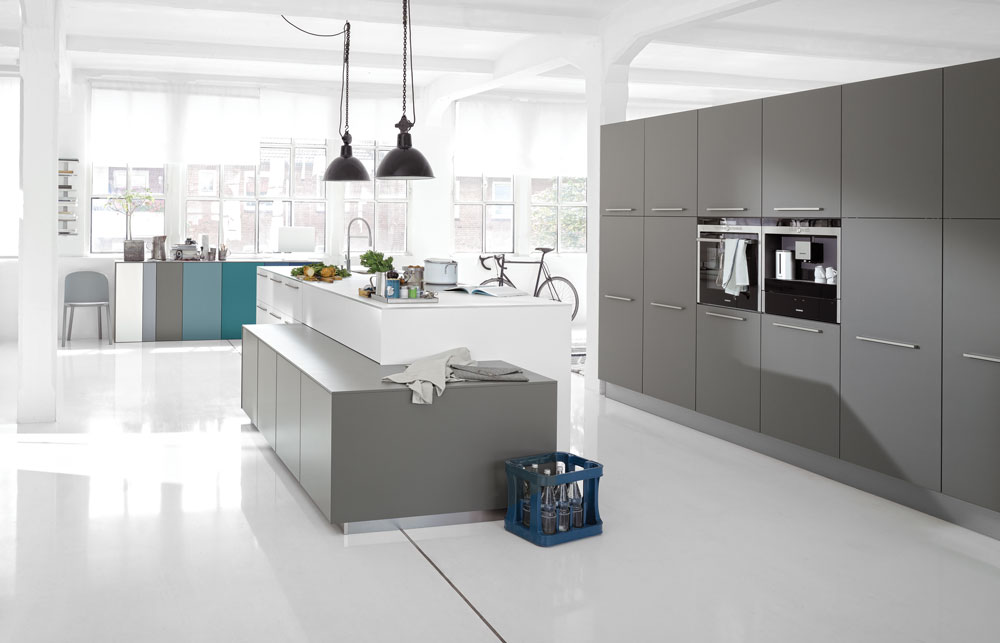
Pictured: Shades of white, grey and teal work together cohesively in this Nolte kitchen from McNally Kitchens.
As well as anchoring the space, pairing a deeper hue with paler shades, or even white, will give the room a feeling of light and openness. You can achieve a similar look with different tones of wood too, adding personality and warmth without losing that feeling of cohesion.
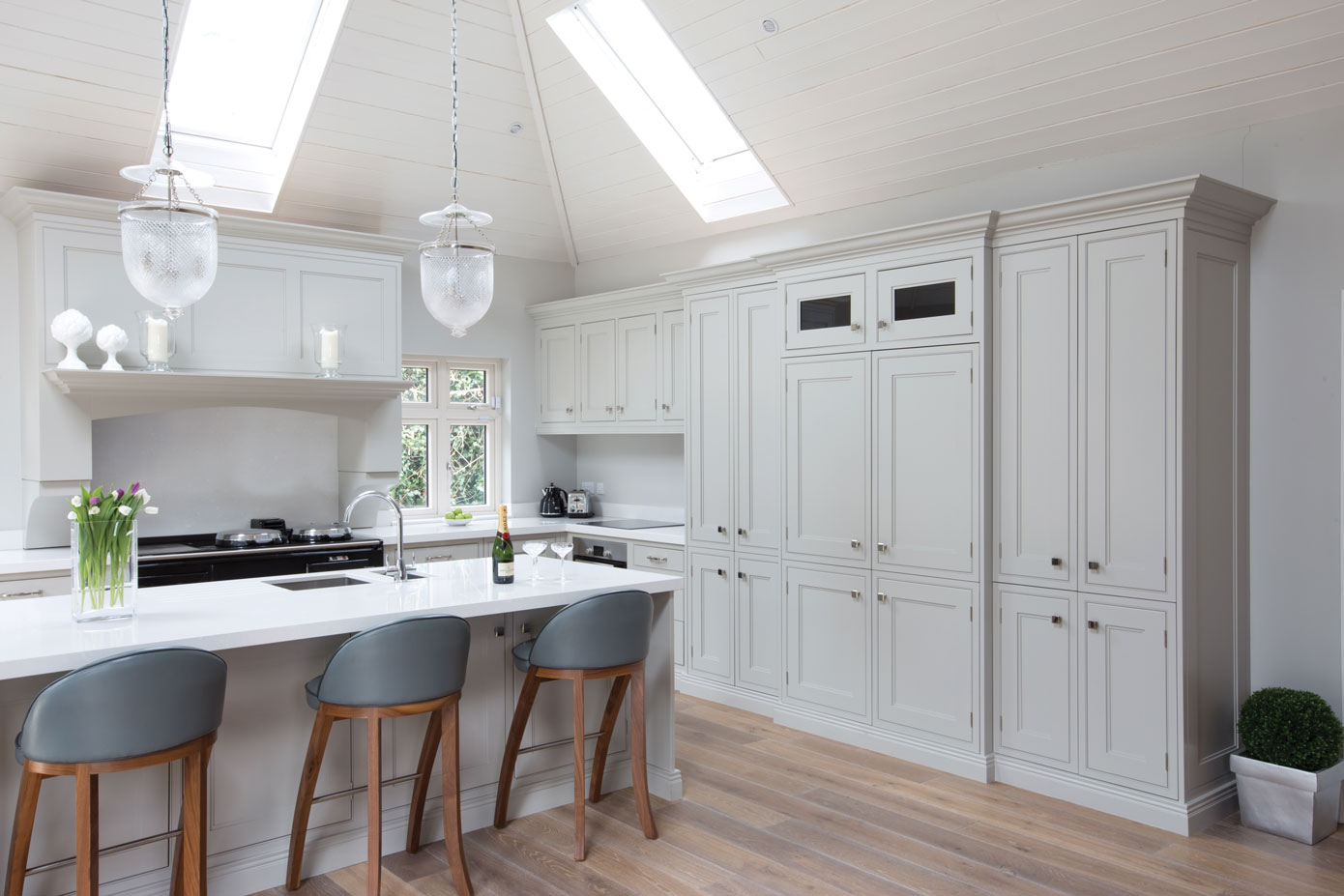
3. RULE: AN ISLAND IS ESSENTIAL
IN REALITY: A PENINSULA CAN WORK JUST AS WELL
Although islands are currently de rigueur, not every room can accommodate one. If an island is too small, it will lack purpose and could potentially be a safety risk when there’s not enough clearance between opposing drawers and cabinet doors. Shoehorning an island into the wrong space can make a room look cluttered and obstruct the natural flow between zones. Alternatives to try include incorporating a peninsula (which can include appliances, storage and seating too), or looking to smaller, mobile pieces of furniture which can easily move between zones and even rooms.
Pictured: No island, no problem. A peninsula, like this one from Noel Dempsey Kitchens, is just as practical for cooking and entertaining.

4. RULE: YOU MUST CREATE A “WORK TRIANGLE”
IN REALITY: LET THE SPACE DICTATE THE OPTIMAL WORKFLOW
While creating a perfect imaginary triangle connecting the sink, fridge and stove has certainly been tried and tested in its efficiency, it has its limitations. And there are plenty of alternatives available, depending on the size and shape of the room. As long as there is a clear and direct route between the three main work zones – preparation, cooking and clean up – you can experiment a bit. In a large kitchen, each of these areas can have smaller zones within, for example, a designated prep sink might be located within reach of the fridge and bin. If there are two cooks in the family, you can even create two triangles as long as there is only a crossover on one area. When designing a smaller, galley kitchen, having the sink, oven and fridge on the same wall may be the only option, but don’t despair. It can also be a very practical way to free up more worktop and cabinet space opposite. Whatever the shape and size if your room, a good designer will be able to identify any constraints and work to overcome them.
Pictured: This kitchen, by O’Connor Kitchens, has been designed to accommodate two cooks.
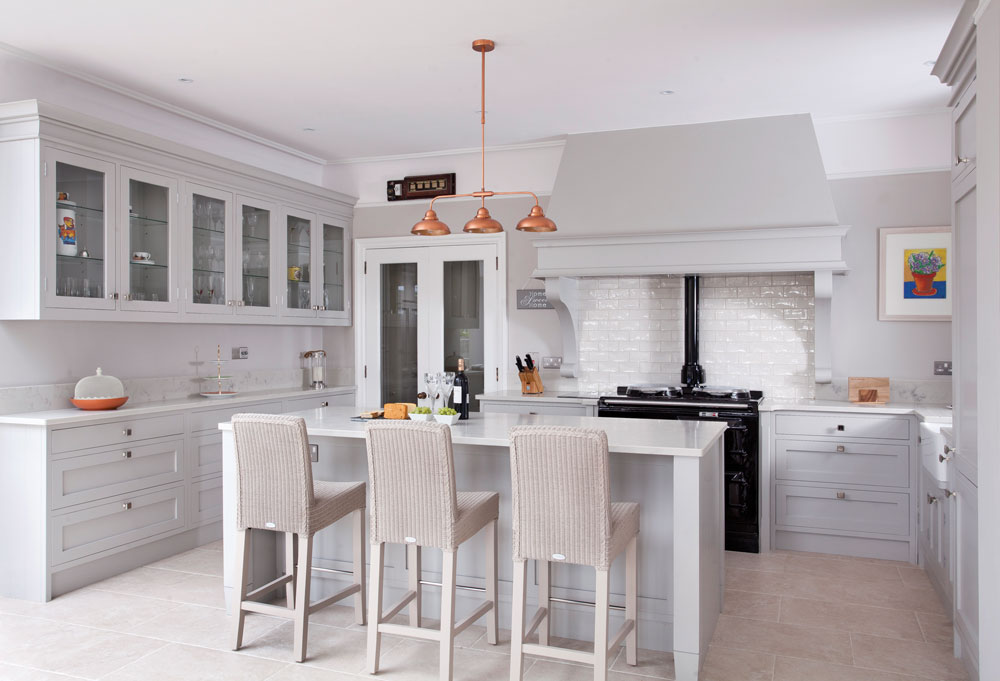
Pictured: The island in this kitchen by The Design Yard has a Silestone quartz worktop.
5. RULE: WORKTOPS SHOULD BE STONE
IN REALITY: THERE ARE NEW AND EXCITING MATERIALS OUT THERE
The worktop you choose is likely to be a dominant focal point in your kitchen. Granite remains a popular choice in Ireland, as do some high-end stone composites and for aesthetics alone, there’s no denying that marble is exquisite (and very Instagram-friendly). Your worktop material needs to be durable, hygienic and easy to clean but stone is certainly not the only option.
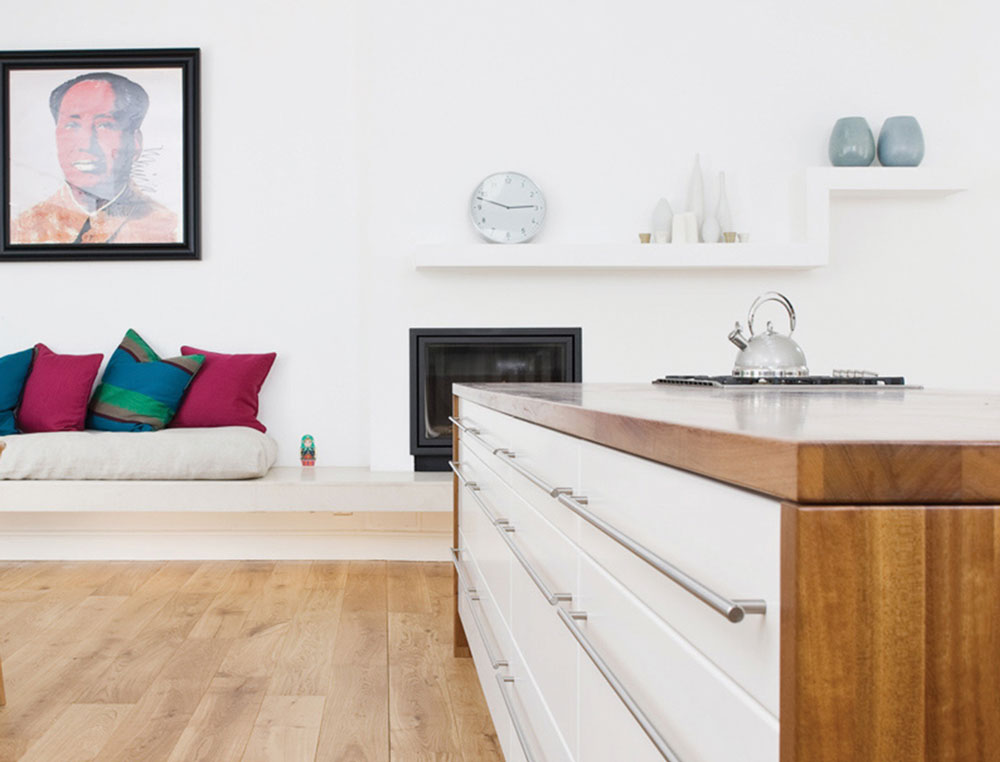
Pictured: The teak worktops in this kitchen by Andrew Ryan adds a Nordic feel.
So what’s left? Stainless steel works well in industrial spaces and offers a professional effect, Corian is sleek and heat resistant, quartz is versatile and hygienic, concrete is bombproof, glass looks cool and contemporary, resin is affordable and timber adds warmth and texture (but requires yearly maintenance). One stylish idea is to mix two materials, for example marble on an island and beech or walnut elsewhere, to add a more personal feel. There are myriad options, once you think outside the block.
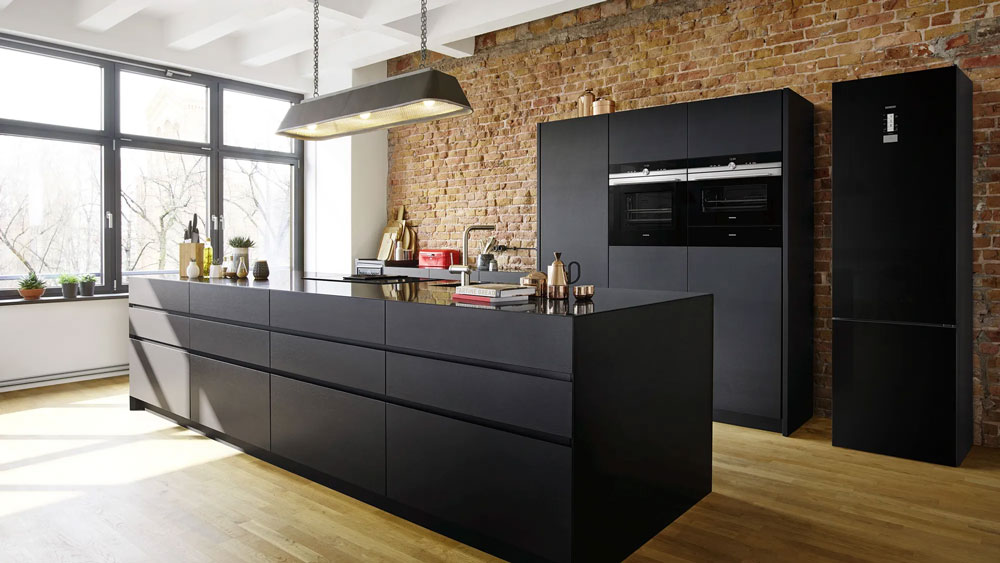
Pictured: sleek integrated appliances from Siemens; www.siemens-home.com.
6. RULE: IT’S FINE TO CHOOSE YOUR APPLIANCES LAST
IN REALITY: THEY SHOULD BE CONSIDERED IN THE PLANNING STAGES
Thanks to constant innovation and advancements in technology, kitchen appliances have evolved from clunky eyesores into state of the art tools. And some, for example retro-style fridges, you may even want to display. Leave choosing yours until the last minute and you run the risk of missing out on some really clever devices, like the latest steam oven or dishwasher, due to space and budget constraints.

Take the cooker hood. What was once an obstruction at eye level can now lift from your worktop at the touch of a button, extracting vapours and odours with a smart and efficient downdraft system. Versatile wine conditioning units now come in various sizes while built-in coffee machines (that you can programme from an app) are convenient and free up valuable worktop space.
Pictured: a Bosch wine cooler; www.bosch-home.ie.

7. RULE: STICK TO YOUR ORIGINAL PLAN, NO MATTER WHAT
IN REALITY: LET YOUR DESIGN EVOLVE ORGANICALLY
The importance of being flexible during any design or refurbishment project cannot be overstated. As the venture progresses from a two-dimensional drawing to a real structure, there will be always be obstacles to overcome, spaces feeling tighter than you’d anticipated or materials or colours that suddenly look different once they’re in the room. Remain adaptive and open-minded, and trust in the advice of your designer. Once you allow the design to evolve organically, you can be guaranteed satisfaction with the end result.
Pictured: Your original plan may not include a wine cooler, as seen in this kitchen by Newcastle Design, but who wouldn’t like one?
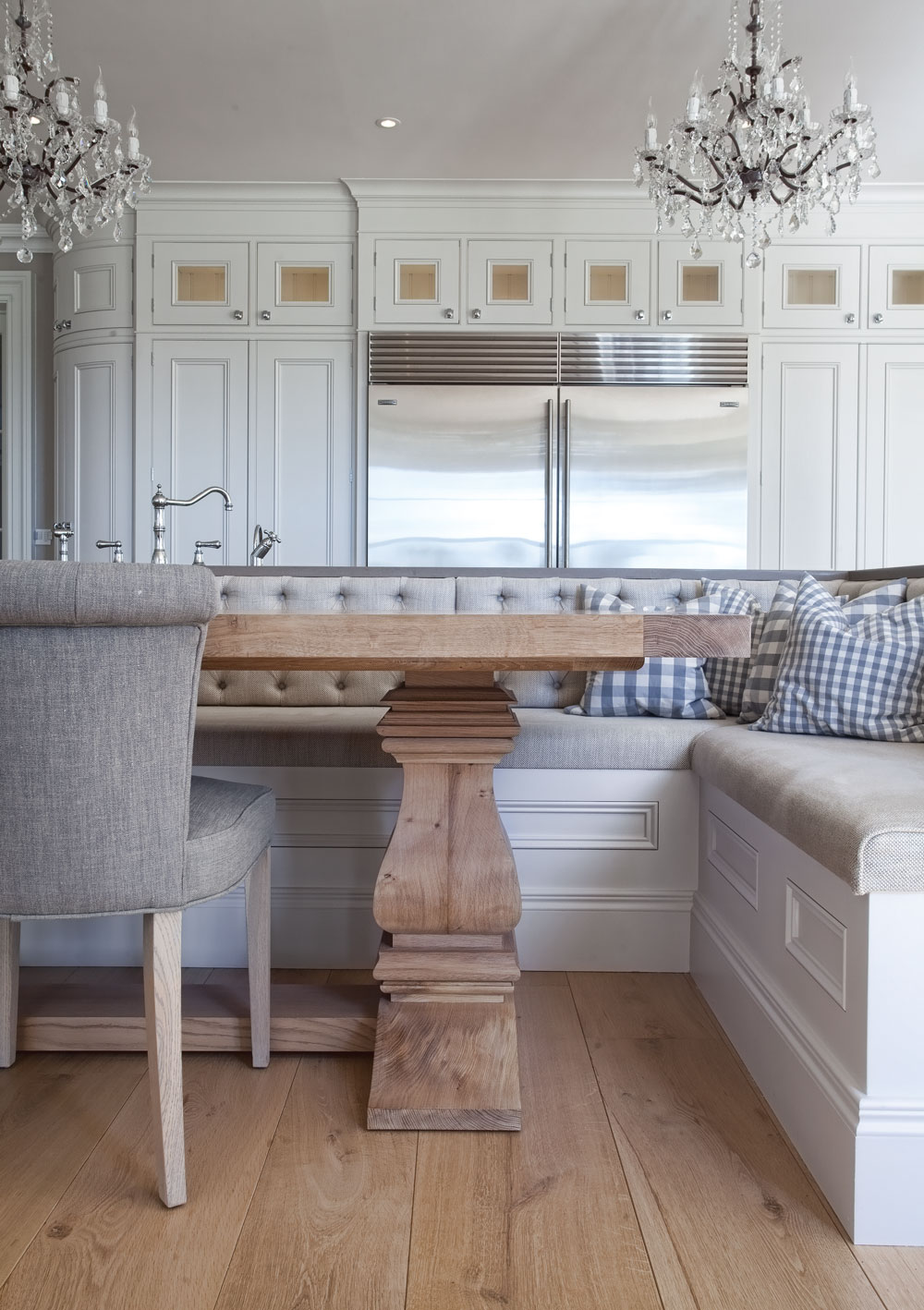
8. RULE: SEATING MUST BE FREESTANDING
IN REALITY: A BANQUETTE CAN SAVE SPACE AND ADD STORAGE
As well as providing a cosy and comfortable spot to eat, banquette seating in a kitchen can give new purpose to all manner of awkward or tricky spaces. Whether built in to an island, sitting snuggly in an alcove or making the most of a bay window, it is worth considering as a smart alternative to a traditional table and chairs, especially for casual gathering. Upholstered seating will also provide an opportunity to bring some semipermanent pattern and texture into the room. If space is at a premium, a banquette can increase storage, with under-seat options ranging from drawers to open cubbies. Lighting is one important consideration while in the planning stages: it should clearly define the space as well as being ambient. A good kitchen designer will advise.
Pictured: This stylish breakfast nook, created by Hayburn & Co, is an informal alternative to a table and chairs.






